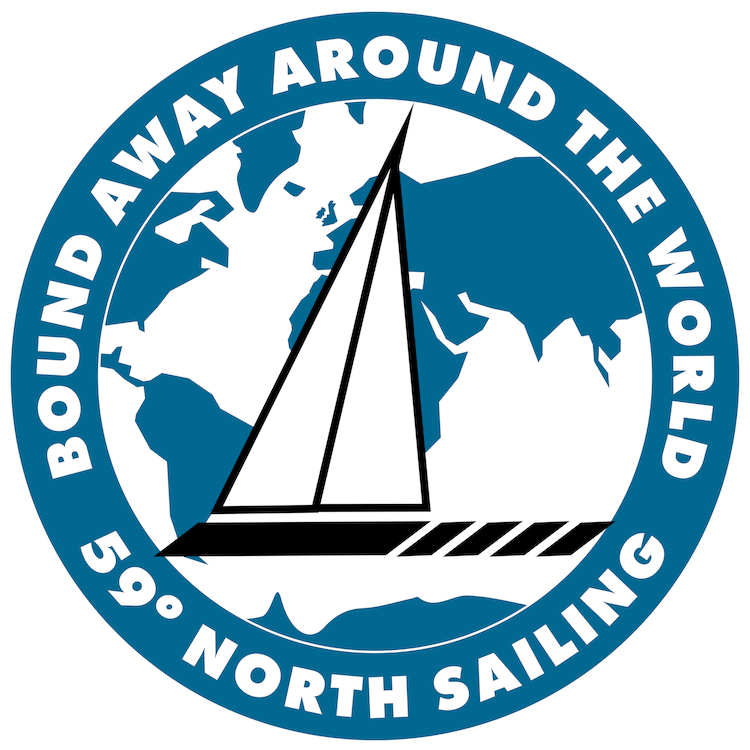I was very excited to see my newest article, "Don Street is not Dead" out in the May 2014 issue of SAIL Magazine, which just got delivered yesterday with the mail. Normally writers cringe when their editors get a hold of their work, but I was very pleased with the work that Peter, Charlie and Meredith did on this piece, which was over a year in the making. The left my 'voice' intact.
That said, we had to cut a lot! The published piece is something like 1,500-2,000 words. My first draft, on the other hand, was over 5,000! The podcast I did with Don, which gave me a lot of material for the article, ran at nearly 90 minutes. So in a series of posts here now, I'd like to share some of the stories that didn't make the print article, but that shine more light on one of my sailing heroes. Read on...
To my surprise and delight, Donald Street, one of my sailing heros, actually contacted me.
I’d written a small article for a Caribbean magazine about the usefulness of his Imray-Iolaire charts in use throughout the Caribbean. He ended up printing the article and using it at a handout during one of his seminars at the Annapolis Boatshow in 2010. I’ve been in touch with him ever since.
When Mia and I sailed Arcturus across the far north Atlantic, it was Street’s route that we followed, stopping off in the Bra d’Or Lakes in Canada and ultimately leaving from the tiny French island of St. Pierre and making landfall in Crookhaven, on the south coast of Ireland.
“You drink Murphy’s in the south of Ireland!” Donald lectured us. “Guinness is from the north!” Aye aye. Murphy’s it was, and a damn good pint at that, particularly after 23 days at sea. After five days unwinding in the village there, we sailed to Glandore and met Street in his adopted hometown.
Street would have been proud of our entrance – we short-tacked Arcturus up the narrow channel, careful to avoid the sharp rocks to the east, and managed to sail right onto the mooring ball.
It was a planned meeting, but we bumped into him by chance on the road leading up into the village from the waterfront where we’d left the dinghy. Street was meandering down the hill, that tattered Tilly hat in place on his head, his white scraggly beard hanging off of his frail chin. He invited us into his house the next morning for coffee.
“You’d better come early, I’m racing Dragons tomorrow!” he warned us. It was a Sunday, and even now, at age 84, those races remain his ritual.
The house he occupies is just a block off the waterfront, tucked into a hillside behind a local inn. Street has converted the sunroom out back into a sort of attached apartment/office, with a small sitting area under a roof of skylights and a little kitchen for making tea and coffee. Iolaire’s original tiller hangs on the back wall next to photos of his sons sailing J-class yachts and other big boats in various parts of the world, and seemingly every issue of every yachting magazine ever published laid scattered around the living room floor and occupying end tables and counterspace. A small laptop was open on a reclining chair, and a crude printout of his latest book – Street’s Guide to the Cape Verde Islands – was loosely bound and lying on the floor.
It’s his wife’s house, actually, and to Street, this is an important distinction, for he still sees himself as a “wandering sailor” since being displaced from Grenada after the 1983 invasion by US forces, a footnote in Street’s biography, but a pretty astounding story nonetheless.
“The Peoples Revolutionary Army seized our two houses and five acres of land,” Street told us, “and we were never allowed back.” Hence his ‘guest room’ in Ireland.
He offered us coffee in that raspy voice of his, disappearing for a few minutes while the electric kettle heated up, and reappearing again with two ceramic mugs. After filling them with hot water, he handed Mia and I each a mug of what was then, and still is, the strangest cup of coffee I’d ever had. It was as if Street had disappeared into the back room with a Ziploc bagful of whole coffee beans, and rather than grind them, simply hit them a few times with a hammer before depositing them into our mugs. The coffee consisted of the hot water, some cold milk and a handful of quartered and halved coffee beans floating around in the mixture. I don’t know if it was an Irish thing or not, but I suspect it was simply a Street thing. It was then that I decided I had to write about this man.


